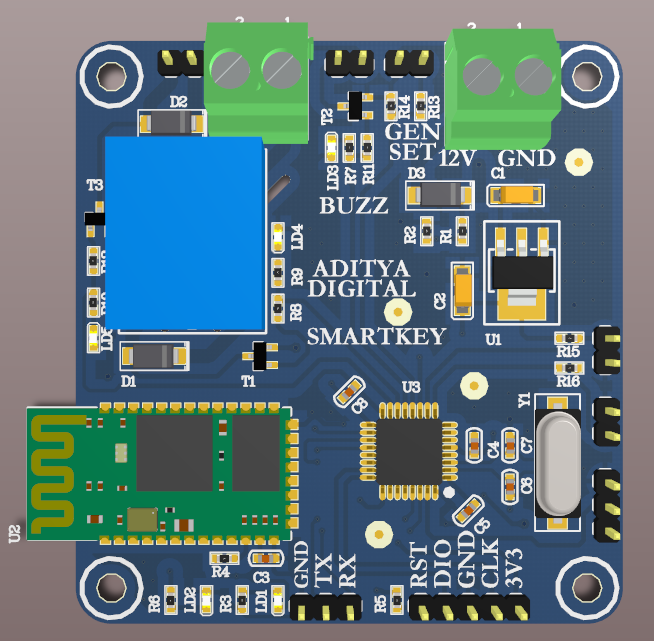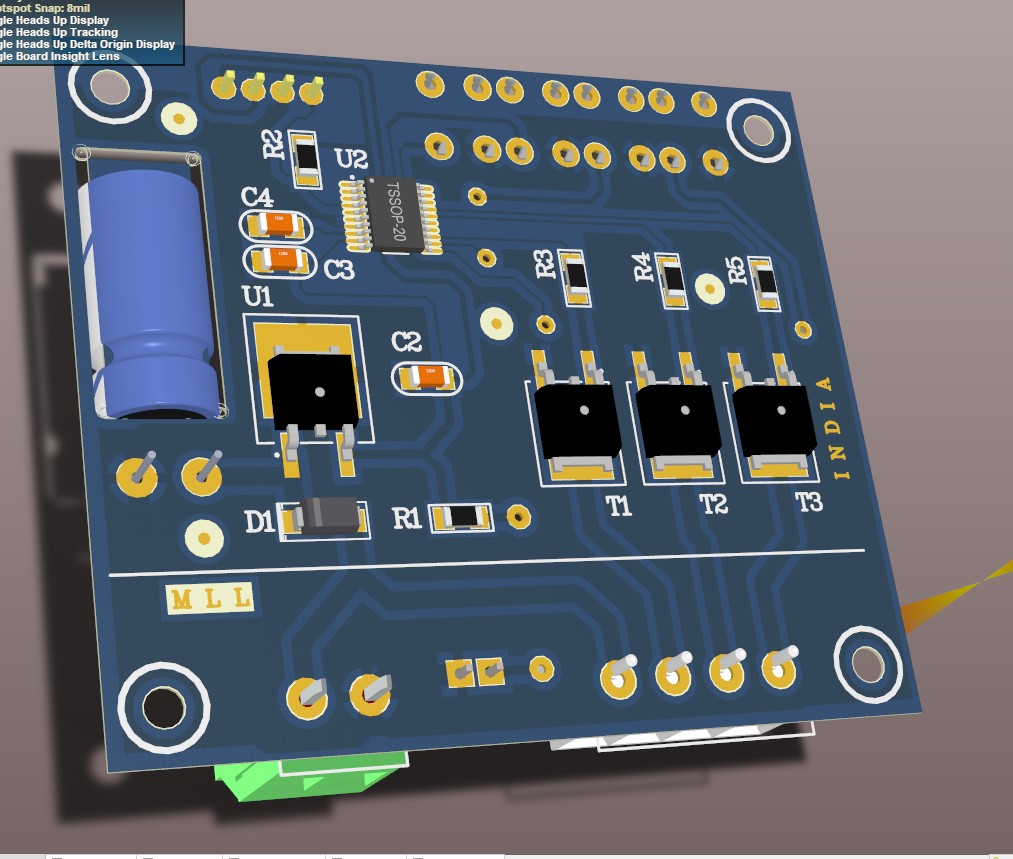This system is a single relay on timer. That means a relay must be kept on for a specified time and then turned off. This relay is used to trigger an x-ray exposure machine in order for get accurate exposure time. The time is set using a up and down key. A three digit seven segment display is used to show time during setup and countdown during run. The time range is from 0 to 5.99 seconds. The time can be adjusted in intervals of 1/100th of a second . User can keep two different time settings. This is selected by a third push button. Both time intervals are stored in EEPROM thus they are not required to set up each time. When second timer value is selected a yellow LED starts glowing to indicate this. The fourth button is start button, when pressed the relay is energized and count down begins and display shows this count down. Once the countdown reaches 0 the relay is deenergized.







